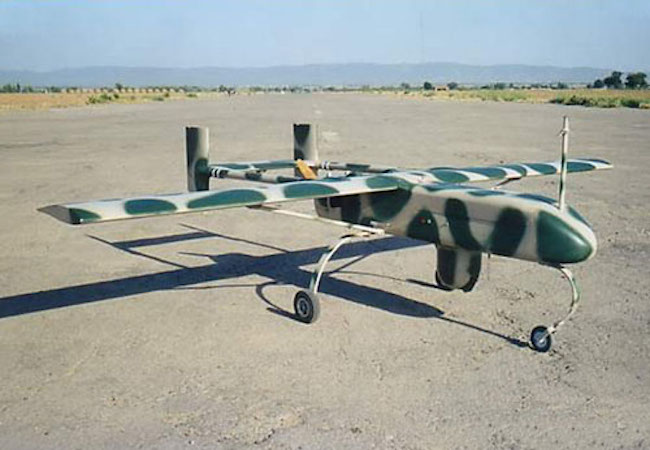Unmanned Aerial Vehicles (UAVs) and escalation along Line of Control (LoC)

By Muhammad Adil Sivia
The intensity and frequency of unprovoked shelling across Line of Control (LoC) by Indian occupying forces targeting civilian population in Azad Jammu and Kashmir (AJK) has increased many folds under the Bharatiya Janata Party driven by extremist Hinduta ideology. Since January 1949, India continues to blatantly refuse the mandate and functions of United Nations Military Observers Group in Indian and Pakistan (UNMOGIP) that was created to monitor ceasefire violations on both sides of LoC.
Lately on May 25, Indian troops fired on the vehicles carrying UNMOGIP observers on Pakistani side LoC in Khanjar sector. Despite the fact that the vehicle carrying observers had the blue UN flag hoisted on it for clear identification, the firing incident shows that it was deliberate action on part of Indian troops to target the UN observers. The purposes of such deliberate firing can be none other but to stop UNMOGIP observers from collecting evidence of ceasefire violations by Indian forces.
Realpolitik in 21st century at tactical level bears profound shift where states are looking for alignment of interest instead of alliances. Balancing China at least in military domain brought convergence of interests between India and the US. In 2005, India and the United States signed a ten-year defense framework in which they committed to increasing defense trade, the transfer of technology, and counterterrorism collaboration. Barack Obama realized the waning influence of the country around the world and presented “Pivot to Asia” strategy that was later on renamed as “Rebalance to Asia” for reasserting US leadership role around the world especially Asia. This strategy viewed India as natural partner in South Asia. India seized the opportunity to align with the US for exploiting ‘China threat’ to build its military muscle.
Prime Minister Narendra Modi’s military modernization project aims to spend $250 billion by 2025 to develop kill factor. Such plan will further put pressure on Pakistan to adequately enhance defense spending to counter conventional threats to its security. In June 2016, under Obama administration India requested the US for supply of 22 General Atomics Guardian drones. These drones are primarily used for surveillance purposes but can be armed with air-to-ground missiles as well. Major hurdle for India acquiring both armed and surveillance UAVs from the US after joining the Missile Technology Control Regime (MTCR) on June 27, 2016 with the US support has been removed. With the signing of Logistics Support Agreement (LSA), Communications Interoperability and Security Memorandum of Agreement (CISMOA) and Basic Exchange and Cooperation Agreement for Geo-spatial Cooperation (BECA) with the US, India has renewed push for acquiring combat Unmanned Aerial Vehicles (UAVs).
For increasing pressure, the US Senate India Caucus co-chairs Senator John Cornyn (R-TX) and Senator Mark Warner (D-VA) have written letters to Secretary of State Rex Tillerson and Defense Secretary Jim Mattis for early approval of 22 General Atomics Guardian drones for India. India is also in consultative process for buying 100 armed Avengers UAVs from the US. Avengers drones armed with Hellfire anti-tank missiles can strike targets eight kilometers distant. The delivery of 10 Israel manufactured Heron TP-armed drones is due this year. Dual use Heron drones can be used both for reconnaissance and air-to-ground missiles.
Induction of advanced surveillance and combat UAVs along LoC by India will be highly destabilizing. India has claimed to carry surgical strike in the aftermath of Uri attack, a claim vehemently denied by Pakistan due to absence of any evidence of such strike. Armed UAVs will provide India the capability to strike targets within Azad Jammu and Kashmir without risking the lives of its ground soldiers and air force pilots. Under these circumstances, Pakistan will be forced to respond in kind and situation will escalate due to Indian aggressive actions along the LoC. Recently Lt. Gen. Vincent Stewart, the head of US Defence Intelligence Agency in testimony to US Senate Armed Services Committee has shown serious concerns about India launching aggressive actions inside Pakistan on the pretext of stopping cross-border attacks. The US, Israel or any other state supplying UAVs especially armed UAVs to India must play responsible role for keeping tensions under control along LoC. Such UAVs deliveries should only proceed after written guarantees from India that these UAVs will not be used along LoC. The US as world leader must consider the dangerous implications of these UAVs on peace along LoC. The world leader must not forget that keeping India and Pakistan away from armed conflict is in the best interest of international community.
Muhammad Adil Sivia works as Research Associate with Strategic Vision Institute (SVI), a think tank based in Islamabad.




